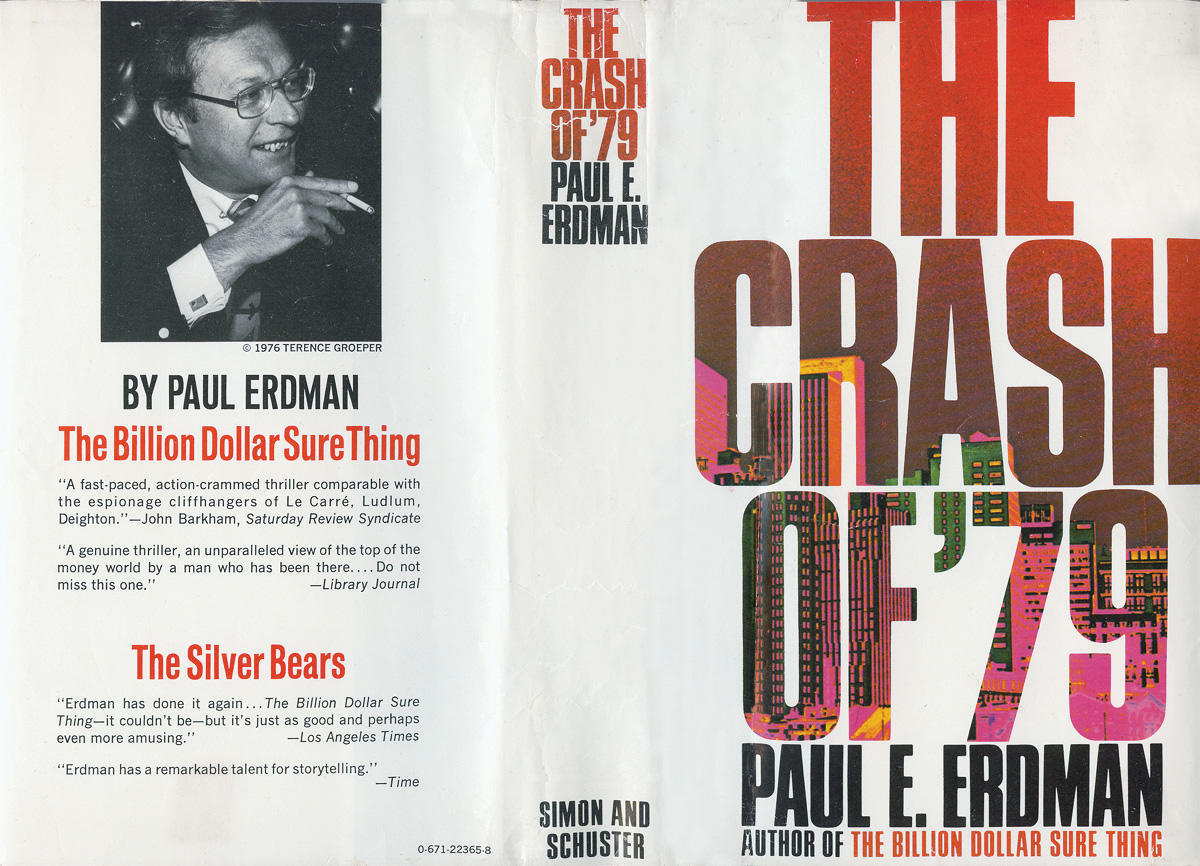
Reading Paul E. Erdman’s thriller The Crash of ’79 I couldn’t help but sit back and reminisce about the 1970s in Bulgaria. It was a cozy time of relative stability and prosperity. We were getting lots of crude oil and electricity from the USSR in exchange for tomatoes, wine and cigarettes. We knew who our friends were (the Soviet Block) and who our enemies were (NATO and capitalism). Things were comfortable and simple. In our case, the “crash” came not in ’79 but in ’85, with perestroika, when Mr. Gorbachev suddenly reminded us that, even between friends, “cheese costs money.” In other words, if you want crude oil and electricity, you have to pay world market prices. This historical turn is pretty obvious in hindsight, but very few predicted it.
Admittedly, by that time, we’d already gained a different perspective on a number of things. For example, we began to understand the mysterious state visits from improbable friends like the Shah of Iran or the Emperor of Ethiopia when as junior high school kids we were made to line up on the main boulevards of Sofia, waving flags as the motorcades swished by. Our own dictator, Todor Zhivkov, would call Reza Pahlavi and Haile Salasie his “friends” — unlimited powers attract each other, and perhaps rentier states even form a class of their own. These were friends talking business, indulging in common dreams of worldwide influence and political status, their situation spiced up with a few thousand Renault 5 cars produced in Iran and sold in Bulgaria as a deluxe alternative to the Ladas, Skodas, Wartburgs, and Trabants. Such are the bizarre deals, foggy aspirations and murky alliances that Erdman’s novel describes.
The Crash of ’79, published way back in 1976, is wonderful reading material, the perfect paperback for a four-hour flight, pleasant and easy to breeze through. It features an engaging plot full of suspense, replete with useful information on the world of oil and international finance. The action takes us all around the world and involves the top decision makers of the time (including Pahlavi), and even dishes up a peppery love affair between the macho, selfrighteous narrator and the luscious daughter of a Swiss nuclear scientist. (Their relationship, incidentally, has made me wonder repeatedly what exactly the “Persian position” in chapter forty is all about.) In short, the book easily holds its ground when compared to more recent examples of the flourishing genre of international intrigue. Its most important asset, however, is its prophetic dimension. The book actually predicted a string of events in the Middle East between late 1978 and early 1979. Though it did not foretell the Iranian Revolution, it predicted nearly everything else in terms of major politico-economic developments, the aspirations of the key players, and some of the ways in which the geopolitical situation evolved. That said, not everything has fallen into place (yet), for the narrative begins — and ends — in an apocalyptic world reverted to pre-industrial, no-tech simplicity.
The Crash of ’79 was written by an insider following the oil crisis of 1975. To re-read it now is simply a must. Although the world reserves of crude oil are diminishing and cheap alternatives are not available, oil consumption is exploding. According to a more recent exercise in geopolitical divination, James Howard Kunstler’s The Long Emergency: Surviving the Converging Catastrophes of the Twenty-first Century, one billion Chinese are about to buy their first car by 2006. I wonder what Erdman — or Gorbachev — would have to say about that. Cars need gasoline. Pretty obvious indeed.